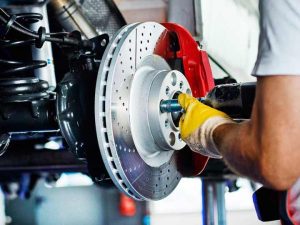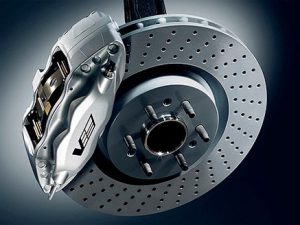Table of Contents
- Inspect Your Brakes Regularly
- Replace Brake Pads
- Check Brake Fluid Levels
- Bleed the Brakes
- Brake Maintenance Schedule
Inspect Your Brakes Regularly

Regular inspection of your car’s braking system ensures your safety on the road. Look for signs of wear such as deep grooves or uneven wear on the rotors and listen for any unusual noises when braking. Visual inspection should be carried out every 12,000 miles or once a year, whichever comes first.
Components of Brake System
| Component | Function |
|---|---|
| Brake Pads | Provide friction against the rotors. |
| Rotors | Connected to wheels and are slowed by brake pads. |
| Brake Fluid | Transfers force into pressure to the brake pads. |
| Calipers | Houses brake pads and pistons to press them against the rotors. |
Numbered List of Inspection Steps
- Ensure the vehicle is on a level surface and the engine is off.
- Remove the wheel to access the braking components.
- Check the thickness of the brake pads.
- Inspect rotors for warping or deep grooves.
- Look for leaks around the brake lines.
Replace Brake Pads

Brake pads need replacement when they wear down to less than 3mm thickness. Delaying this can damage the rotors, resulting in more costly repairs. Typically, brake pads should be replaced every 20,000-50,000 miles depending on usage.
Steps to Replace Brake Pads
- Secure the vehicle on a flat surface and remove the wheels.
- Remove the caliper to access the brake pads.
- Take out the worn brake pads and install the new ones.
- Reattach the caliper and ensure bolts are tightly secured.
- Test the brakes in a safe area to ensure proper installation.
Check Brake Fluid Levels
Brake fluid is crucial for the hydraulic system of brakes to function effectively. Regularly check brake fluid levels and quality to prevent moisture contamination that can lead to brake failure. Replace the brake fluid every 24,000 miles or two years.
Fluid Level Maintenance Table
| Maintenance Interval | Action |
|---|---|
| Every 12,000 miles | Check fluid level |
| Every 24,000 miles | Replace brake fluid |
Bleed the Brakes
Air in the brake lines can lead to a spongy pedal feel and reduced braking power. Bleeding the brakes is necessary to remove air and ensure the line is filled with fluid. It’s recommended to perform this procedure at least once every two years or whenever the brakes feel spongy.
Procedure for Bleeding Brakes
- Use a bleeder kit and open the bleeder valve.
- Press the brake pedal until all air bubbles escape.
- Ensure the reservoir is topped off with fresh brake fluid.
- Repeat for each wheel, starting with the one furthest from the master cylinder.
- Test run to assess the improvement in braking response.
Brake Maintenance Schedule
Adopting a proactive approach to brake maintenance is crucial. Establish a schedule that includes periodic inspections, timely replacement of pads, and regular fluid checks. For detailed information on brake system parts, visit our comprehensive guide.
Recommended Maintenance Schedule
| Task | Interval |
|---|---|
| Visual Inspection | Every 12,000 miles |
| Brake Pad Replacement | 20,000-50,000 miles |
| Brake Fluid Check | Every 12,000 miles |
| Brake Bleeding | Every 2 years |